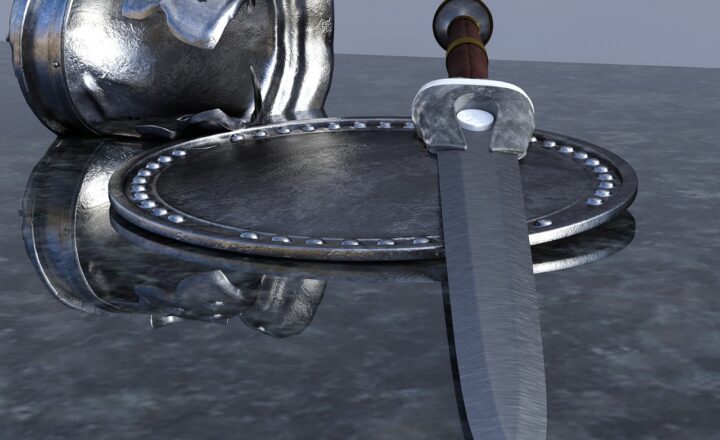The Evolution of Firearms and How Modern Guns Differ from Their Predecessors
November 12, 2024

Firearms have dramatically evolved over the centuries, transforming from simple hand-held weapons to advanced, high-tech machines. This evolution has not only changed the design and functionality of guns but has also reshaped societies, cultures, and conflict management worldwide. In this article, we will explore the history of firearms, their technological advancements, and how modern guns differ from their predecessors.
1. A Brief History of Firearms
The story of firearms began in the 9th century in China, where gunpowder was first invented. The earliest forms of firearms were rudimentary, characterized by simple tubes that could fire projectiles when ignited.
– Gunpowder and the Hand Cannon:
The first true firearm is considered to be the hand cannon, developed in the 13th century. Hand cannons were made of metal and shaped like a small tube, often requiring a torch to ignite the gunpowder.
– Matchlocks:
In the 15th century, the matchlock mechanism emerged, allowing for greater ease of use. This innovation used a slow-burning match to ignite the powder when the trigger was pulled.
– Flintlocks:
The 17th century saw the rise of flintlock firearms, which utilized flint and steel to create a spark for ignition. Flintlocks dominated military and civilian firearms for over two centuries.
2. The Industrial Revolution and Firearm Innovation
The Industrial Revolution in the 18th and 19th centuries heralded a new age for firearm manufacturing.
– Rifling and Accuracy:
The introduction of rifled barrels allowed projectiles to spin, significantly increasing accuracy. This development made firearms much more effective in combat.
– Breech-loading Mechanisms:
Soon after, breech-loading firearms became popular, enabling quicker reloading compared to traditional muzzle-loaders. This advancement was crucial during conflicts like the American Civil War.
– Revolvers:
Samuel Colt invented the revolver in 1836, featuring a rotating cylinder that could hold multiple rounds, thus enhancing the rate of fire.
3. The 20th Century and Automatic Firearms
The 20th century brought forth a wave of innovation in firearms.
– Semi-automatic and Fully Automatic Weapons:
The introduction of semi-automatic firearms allowed for one shot per trigger pull without manual reloading. Fully automatic weapons, such as machine guns, could fire continuously as long as the trigger was pressed.
– Design Improvements:
Firearm design evolved to include materials like polymer, reducing weight while enhancing durability. This shift enabled the creation of more versatile firearms for military and personal use.
– Assault Rifles:
The AK-47 and the M16 are prime examples of firearms developed for modern warfare. These weapons combined the ease of use of automatic firearms with the maneuverability required by soldiers in combat.
4. How Modern Guns Differ from Their Predecessors
Modern firearms exhibit several key differences from their predecessors, making them more efficient and effective:
– Material and Build Quality:
Today’s firearms utilize advanced materials such as steel alloys and synthetic polymers, resulting in lighter firearms that’re resistant to corrosion and wear.
– Safety Features:
Modern firearms come equipped with safety mechanisms, such as drop safeties and trigger locks, which prevent unintentional discharge. This is a significant improvement over older models that had minimal safety measures.
– Modularity:
The trend toward modular firearms allows users to customize their guns according to their specific needs. Users can swap parts, such as grips, stocks, and sight systems, giving them the ability to tailor the weapon to personal preferences or mission requirements.
– Accessories and Technology:
Modern firearms can be equipped with various accessories, including optics, flashlights, and suppressors, enhancing shooting accuracy and effectiveness in various environments.
– Precision Engineering:
Advanced manufacturing techniques, including CNC machining and 3D printing, have enhanced the precision of firearm parts. This ensures improved reliability and accuracy in modern weapons.
5. The Role of Firearms in Society Today
Firearms continue to play a significant role in society, with implications for personal defense, law enforcement, and military applications. However, they also spark debates about regulations, gun control, and public safety.
– Self-Defense:
Many individuals purchase firearms for personal safety, leading to ongoing discussions about the right to bear arms versus the need for regulations to prevent misuse.
– Law Enforcement:
Police forces around the world use modern firearms to uphold law and order, necessitating regular training and adherence to strict safety protocols.
– Military Use:
Firearms serve as critical tools in military operations, where advancements lead to increased effectiveness in combat scenarios.
Conclusion
The evolution of firearms from simple hand cannons to today’s high-tech weaponry reflects not only advancements in technology but also changing societal needs and conflicts. Understanding this evolution helps us appreciate the complexity and significance of firearms in contemporary society. As firearm technology continues to progress, it is crucial for society to engage in constructive dialogue about their roles, implications, and necessary regulations. By examining the past, we can forge a responsible future for firearm ownership and usage.







